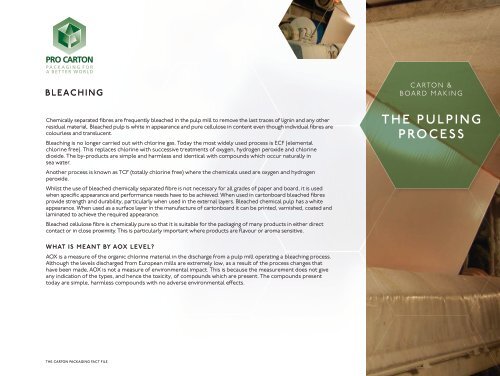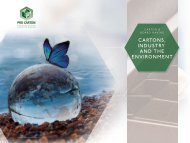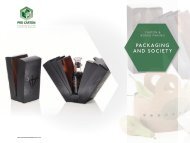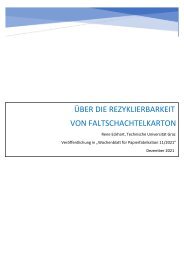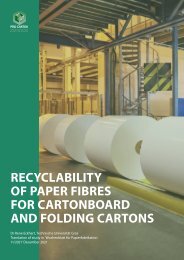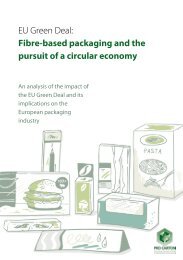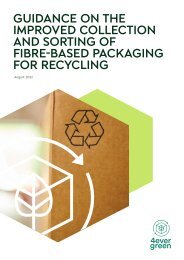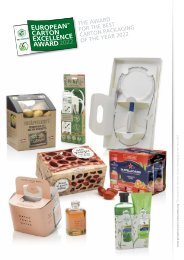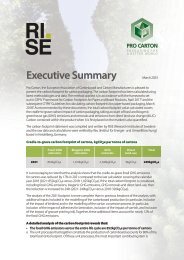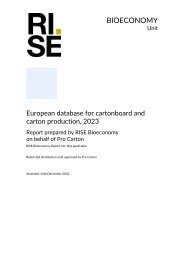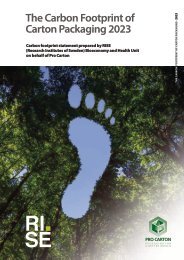Pro Carton Fact File – Module 4 – The Pulping Process
Create successful ePaper yourself
Turn your PDF publications into a flip-book with our unique Google optimized e-Paper software.
BLEACHING<br />
CARTON &<br />
BOARD MAKING<br />
Chemically separated fibres are frequently bleached in the pulp mill to remove the last traces of lignin and any other<br />
residual material. Bleached pulp is white in appearance and pure cellulose in content even though individual fibres are<br />
colourless and translucent.<br />
Bleaching is no longer carried out with chlorine gas. Today the most widely used process is ECF (elemental<br />
chlorine free). This replaces chlorine with successive treatments of oxygen, hydrogen peroxide and chlorine<br />
dioxide. <strong>The</strong> by-products are simple and harmless and identical with compounds which occur naturally in<br />
sea water.<br />
Another process is known as TCF (totally chlorine free) where the chemicals used are oxygen and hydrogen<br />
peroxide.<br />
Whilst the use of bleached chemically separated fibre is not necessary for all grades of paper and board, it is used<br />
when specific appearance and performance needs have to be achieved. When used in cartonboard bleached fibres<br />
provide strength and durability, particularly when used in the external layers. Bleached chemical pulp has a white<br />
appearance. When used as a surface layer in the manufacture of cartonboard it can be printed, varnished, coated and<br />
laminated to achieve the required appearance.<br />
Bleached cellulose fibre is chemically pure so that it is suitable for the packaging of many products in either direct<br />
contact or in close proximity. This is particularly important where products are flavour or aroma sensitive.<br />
THE PULPING<br />
PROCESS<br />
WHAT IS MEANT BY AOX LEVEL?<br />
AOX is a measure of the organic chlorine material in the discharge from a pulp mill operating a bleaching process.<br />
Although the levels discharged from European mills are extremely low, as a result of the process changes that<br />
have been made, AOX is not a measure of environmental impact. This is because the measurement does not give<br />
any indication of the types, and hence the toxicity, of compounds which are present. <strong>The</strong> compounds present<br />
today are simple, harmless compounds with no adverse environmental effects.<br />
THE CARTON PACKAGING FACT FILE<br />
All contents copyright © BPIF 2017.


